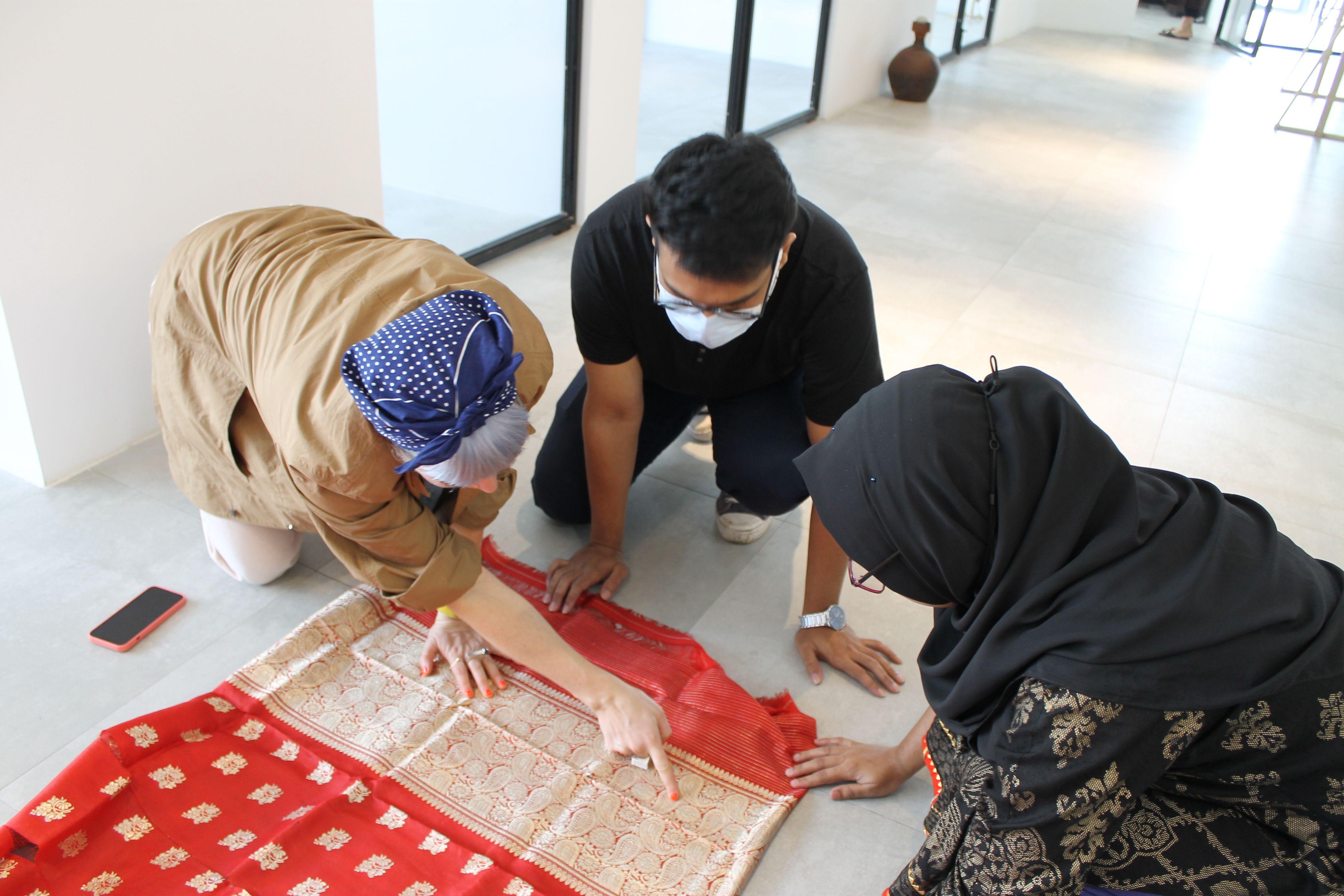Bureau 555: Virtual fabric and garment sampling in Bangladesh

- Written byYana Kasa
- Published date 21 February 2023

Discussions around ‘fast fashion’ often focus on retail waste rather than the processes involved before the garment even reaches the high street.
Traditional models of product development rely on physical processes - such as the production of fabric, creation of garment samples and sending those from country to country. This results in landfill waste from fabrics and apparel that never go into production, carbon emissions from mills and transport and wasted time in generating sampling of new products. Physical sampling also costs the apparel industry an average of $6-8 billion per year1.
Virtual garment sampling is the process of creating digital 2D and 3D fabric and textile and garment representations, which can save a significant amount of time, carbon emissions and waste. It has been slowly adopted across the fashion industry in recent years however there are some challenges. Existing software is often developed with little consultation with the fashion and textile industry, lessening the overall quality and efficiency of the product.
An international research and development project supported by UAL’s Fashion, Textiles and Technology Institute is exploring how refining digital imaging processes, in tandem with the development of training in 3D software skills can make virtual sampling more accessible to the apparel and textiles supply, and manufacturing chain. The project, titled Bureau 555, has enabled collaboration across textile sampling industries in the UK and Bangladesh – which is a global centre for high volume garment production.
Bureau 555 is led by Gabriele Shiner-Hill, Director at design and fabric-sourcing consultancy Shinerhilldesign in London, UK, in partnership with Nusrat Mahmud, Director at Hamid Fabrics LTD in Dhaka, Bangladesh. They combined their expertise in 3D software and textiles to develop digital fabric, and 3D garment representations with the same attention to detail as they would with physical samples.
The project team created true-to-life fabric renders by combining high-quality scanning with the physical data characteristics collected from extensive testing of physical fabric samples. Their in-house laboratory in Dhaka tests the qualities of fabrics such as drape, thickness and weight. This data is then applied to software to create a more realistic representation of the way the fabric moves and drapes when translated into a virtual garment form.
A legacy of the New Landscapes project is the formation of Bureau 555 as a new business, which will continue to build on this research. A comprehensive staff training programme has been developed to support the skills build in 3D software, visualisation and rendering methods, operating across London and Dhaka - recruiting 6 new staff members to date,
A key aim is to upskill workers in the ready-made garment industry, such as those on the sewing lines in Bangladesh – most of whom are women with limited access to digital skills opportunities. Learning these digital skills will not only help make virtual sampling more accessible across the supply chain, but it also offers scope for professional development and advancement.
There is potential in this research and development activity for cultural beneficiaries too. Alongside sampling for the extensive manufacturing industry, the team have also begun to develop a digital archive of specialist heritage fabrics and garments which are increasingly rare, and fragile.
Nusrat Mahmud, Director at Hamid Fabrics LTD and co-lead of this project, said “Bangladesh is home to so many beautiful fabrics, created with skills passed down through generations – but the craftspeople are becoming fewer in numbers. By creating digital records of their work, we ensure this knowledge and expertise is secure for future generations to learn from and experience.”
This project is one of 5 partnerships formed by the New Landscapes Pilot Scheme, led by UAL’s Fashion, Textiles and Technology Institute (FTTI) and supported by the British Council. 5 pairs of SMEs in the UK & ODA countries have received funding, academic research support and access to facilities to work on mutually beneficial projects that promote the cultural, social and environmental values of a sustainable global fashion and textiles sector.
Applications for the next round of New Landscapes: Catalyst Research & Development Grant Scheme are now open. Find out how to apply here.
1. Building the case for 3D: Key savings and ROI. Optitex, 2015.